
We kindly inform you that, as long as the subject affiliation of our 300.000+ articles is in progress, you might get unsufficient or no results on your third level or second level search. In this case, please broaden your search criteria.





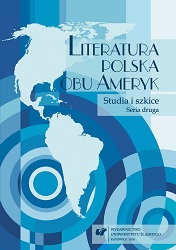
The article describes a common episode in the biography of the poet Jan Lechoń and the essayist and painter Józef Czapski. Representing the same generation, the artists did not take a liking to each other. Before World War II, their contacts were sporadic at best. In 1950, they met again in New York, which was Lechoń’s emigration residence. Czapski visited North America to raise money for the functioning of “Kultura” magazine in Paris. For this purpose, he was meeting with the Polish diaspora and giving lectures, in which he testified about the Katyń massacre. He included notes on the observed specificity of American culture in the quoted essays. For Lechoń, meetings with Czapski constituted a big mental and emotional problem, the evidence of which can be found in the poet’s Diary, kept regularly (at his doctor’s recommendation). After many years, reading that same diary helped.
More...
The article “American Disquiets of Jan Józef Szczepański” is an attempt to reconstruct the writer’s judgments and opinions on the changes that swept through the American culture in the late 1960s. The writer, diverging alone from the beaten tourist tracks, observes America; what testifies to it is his direct account of a diarist. When confronted with his subsequent literary texts, fragments of Szczepański’s Dzienniki [Diaries] reveal the often critical attitude of the writer towards the cultural and civilizational wonders of the United States.
More...
Polish reportages, in which the authors have tried to build an interesting and non-stereotypicalimage of the United States, are few. The reasons for this state of affairs seem complex. What discourages contemporary reporters from breaking the stereotypes is perhaps the fact that today the United States are the most exploited by mass culture place on Earth. Maybe the popular thinking that we already know everything there is to know about the US also still lingers. In 1997, Paweł Smoleński published Opowieści amerykańskie [American Tales], in 2009, Małgorzata Szejnert had her reportage Wyspa klucz [Key Island] released, and at the turn of the year 2013, reports by Katarzyna Surmiak-Domańska were printed in “Gazeta Wyborcza”. All three authors demonstrated a deep conviction that the United States is a country about which no generalizing judgments can be made since each opinion expressed about the country can be countered with one, equally corresponding to reality, that denies the previous. The reporters set an ambitious task for themselves — they want, at least in some measure, to understand the American society, its culture, tradition and way of thinking. That is why they talk to people and relate their stories, that is also why they focus their attention on unusual issues and phenomena, but primarily on the fate of individuals.
More...
The article contains an analysis of reportage books by Małgorzata Szejnert: Wyspa klucz [Key Island] and Borowiki przy ternpajku [Boletuses near the Turnpike]. The first book, illustrating the history of immigrant inspection station on Ellis Island in New York, is a starting point for discussion on Polish emigration to the United States at the turn of the 19th century. Anxieties of the then emigrants are juxtaposed with the portrait of contemporary Polish diaspora. The authoress discusses their current dilemmas and relationship with the past of their ancestors on the basis of the second of the above-mentioned books. What complements the problems discussed in the article are emigrational episodes in the biography of Szejnert herself as well as various American motifs present in the reporter’s other works.
More...
The research analysis in the article focuses on the volume titled Toronto, Tronto, Trana, co-authored by Jadwiga Jurkszus-Tomaszewska and Adam Tomaszewski, published in Canada in 1967. This book constitutes an interesting contribution to the understanding of the multicultural dimension of Canadian mentality. This book of reportage, in which the information is accompanied by insightful commentary and explanations, is analysed in the context of the genre of reportage written in Melchior Wańkowicz’s style, i.e. somewhere in between the news coverage, opinion journalism and — above all — literature. Toronto, Tronto, Trana can be called a tourist guidebook, a specific Baedeker’s Guide, containing descriptions that are not focused on the discussion of the co-authors’ emigrational fate, on the vision of their situation in the context of exile, of being an expatriate, an émigré, but rather on making use of the opportunities offered by the journey itself as well as demonstrating strong emotional ties with the new homeland – Canada, and especially with the city of permanent residence, namely Toronto.
More...
The authoress of the article presents the figure of Adam Lizakowski, focusing on the poet’sinvolvement in the cultural life of the Polish community in San Francisco and Chicago. She discusses the activity of the poetic group Unpaid Rent as well as the cultural and literary initiatives they developed (individual and group poetic meetings, literary contests, writing workshops, meetings with actors, directors). She also presents the content of the quarterly “Dwa Końce Języka” as well as the social and cultural monthly “Razem.” Furthermore, she mentions a cycle of literary meetings organised in Golden Bookstore, the Polish bookstore owned by Lizakowski and the activity of the Lower Silesian Society in Chicago.The subject matter of the article is the editing activity and writing work of Adam Lizakowski.
More...
The text presents the American journalistic work of Leopold Tyrmand, published mainly in two magazines edited by him in the USA: “The Chronicles of Culture” and “The Rockford Papers.” Both were designed by Tyrmand as instruments supporting the combat against the so-called liberal culture, whose progressing expansion in the 1960s and 1970s was seen by the writer as the most serious threat to the western civilisation. A remedy for the decadence of the western world was to revive and promote the idea and values inherent in conservatism — the ideology fervently followed by Tyrmand in America. Blatant partiality and extremity of opinions expressed in the articles written by Tyrmand in that period have largely contributed to pushing this journalist work outside the mainstream of the public dispute in America.
More...
In Polish socialist realistic journalism and prose, the image of North America is an extremely important element, which is often used as an ideological tool. Vivid images (including those most popular: potato beetle or Coca Cola) in the world divided after World War II are supposed to convince the readers that the United States are a great and ominous power, a superpower built on the exploitation of the working class and becoming rich at the expense of other countries, as well as the willingness to start another global war — a country that strives to destroy peace and communism. These images, already interpreted many times, become an interesting starting point for the description of the specific exoticism of America, completely unknown and unapproachable in Europe, hidden behind the Iron Curtain (although this term is much younger, it perfectly describes the global power structure).South America, on the other hand, remains completely unknown to Polish literary critics andjournalists. It shall remain so, even though the novels of the Brazilian writer, Jorge Amado, have been published in Poland quite often.
More...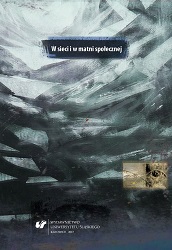
The contemporary world can be characterized by the gradual increase in cultural diversity, which results from a variety of global processes. The shrinking of time and space brought together groups of people who represent a multitude of sometimes distant cultures. This cultural diversity is incorporated into the fabric of societies which operate at different levels of cultural development, including network societies. Thus, the aim of the following article is to present the relationship between cultural diversity and network society. In the first decades of the 21st century, our civilization experienced a huge technological revolution which led to an increase in the flow and volume of the transmitted information on a scale never seen before, and which influenced the means of data transmission. This process was aided primarily by the development of mobile phone technology as well as the Internet. This rapid technological change, in turn, gave rise to the network society: a society saturated withand increasingly dependent on technology. This society has been completely dominated by the computer and the Internet, while production, experience, and power constitute the pillars of its existence. On the other hand, a culturally diverse society is a society that includes various groups which represent different culture, and one that upholds and expresses the values of those cultures. When it comes to cultural diversity, it could be argues that the network society allows to come into contact with different cultures without the necessity of unmediated access. We come to know them via the Internet. We could, therefore, assume that living in the network society allows us to experience different cultures, while at the same time facilitates negative phenomena, such as verbal abuse or discrimination.
More...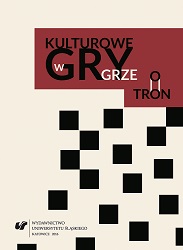
The starting point for the analysis of the representations of femininity in Game of Thrones is the diagnosis of the declarative and real image of the social order in the depicted world. What is examined is the image of the three-person female deity – the Mother, the Maiden, and the Crone – in the pantheon of gods of Westeros and its influence on the construction of the world, grounded upon parallel sets of binary oppositions. The reinterpretation of Jung’s concept of the anima in the Mother, the Maiden, and the Crone as shown in the novels points to the impossibility of reviving the chivalry. The model that embraces Martin’s embodiments of female archetypes is the queen, in whom the aspects of the Maiden, the Mother, and the Crone are combined both synchronically and diachronically. The image of the queen in the novels, exemplified by Daenerys Targaryen, is analysed in the light of two rites of passage determining the progress of transformation of the rational world into the supernatural and magical space.
More...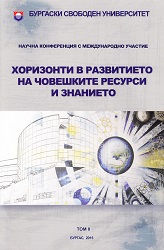
Digital era introduces new market conditions which require new approaches and rules for the presentation and communication with the audience, where are acquainted with the functionality and benefits of a new technology product or service. Digital technology is changing our lives and influence the children who grow - today they are more informed, handling technology without difficulty, using social networks (Facebook, YouTube) and online games are part of their daily lives.How to communicate, educate and protect so-called. „Digital KidZ” in the course of the digital age and where the role of technology as a bridge between education, family and children?
More...
This paper presents and discusses data from the national representative survey carried out among Bulgarian students at 9th class in 2014. The survey is part of the international research network „Health Behavior among School-Aged Children (HBSC)” and it is conducted in more than 40 countries in every 4 years. Gender differentiation in sexual behaviors, mean age of sexual debut, behaviors related to save sex, etc. have been analysed. A comparative data analysis between the two waves of the survey in 2006 and 2014 has been presented as well
More...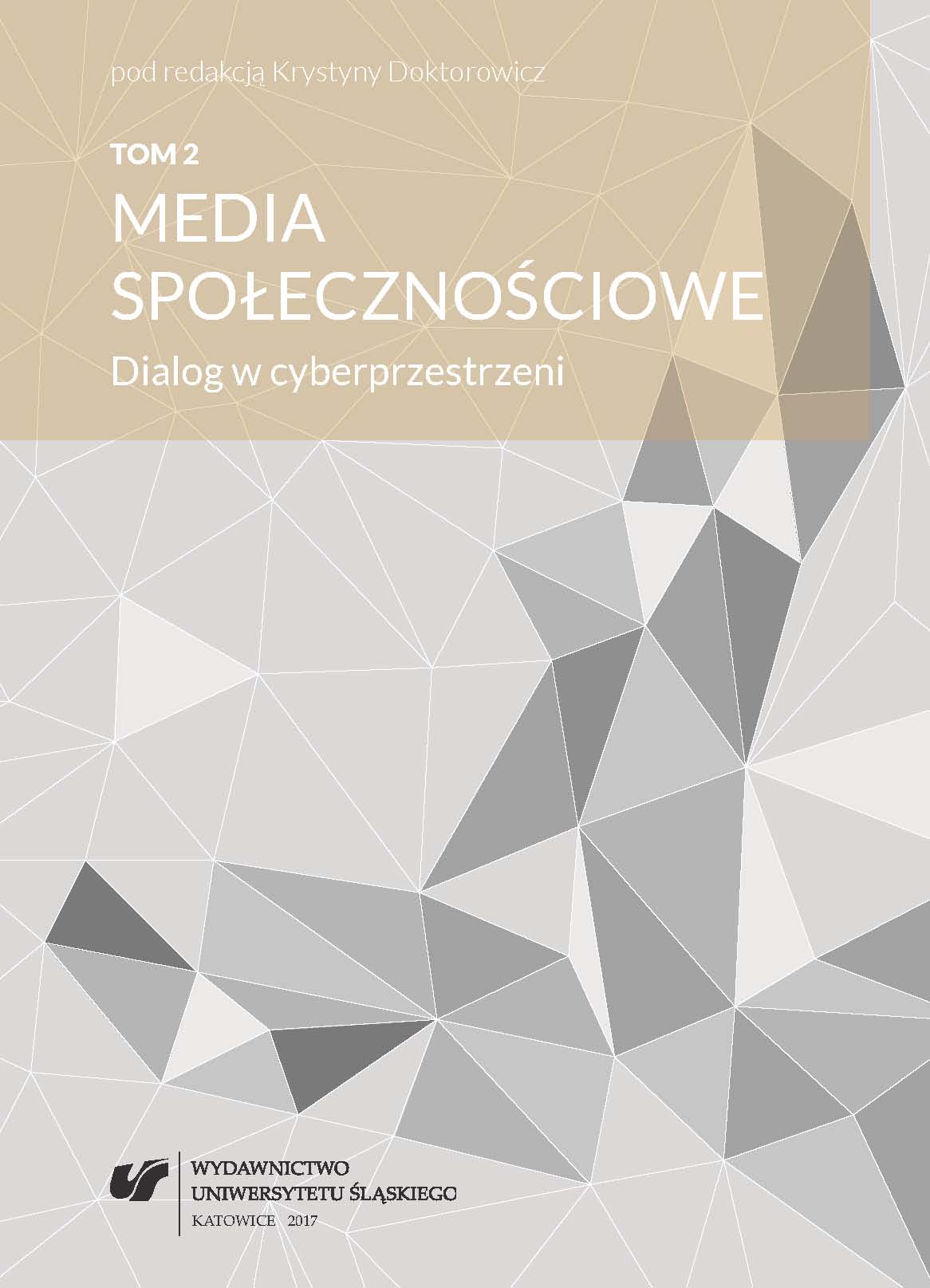
The deliberations included in the text refer to the possibility of the use of social media in promotional film and television series campaigns. The author draws attention to the phenomenon of the more and more frequent process of including the Internet users in processes of promotion. She introduces the ways of activating audiences used for this purpose by the producers and distributors through their activities in social media such as Facebook, YouTube, Second Life. Various ways to use the potential of this type of media are discussed on the basis of examples of specific films and TV series, producers and distributors of which embraced customized promotional solutions. The article also explains the importance of the implementation of viral marketing and crowdfunding in promotional campaigns. The author indicates benefits but also problems associated with involving the audience in future promotional activities by means of the network.
More...
The purpose of this article is to analyze the consequences of mediatization of the interpersonal contacts, especially in the context of social media. Technological (both hardware and software), business, social (eg. emergence of a generation of so-called digital natives) phenomena are taken into consideration as a whole and allow to discuss the argument that the theoretical distinction between “communicating” understood as a contact, communication in the direct physical presence of actors and a mediated contact by digital technology ceases to be significant in social practice, and thus becomes irrelevant theoretically.
More...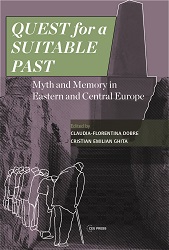
After the fall of communism in December 1989, a feverish period of political and social changes ensued. A new political order took shape, instituted by and instituting a new social imaginary. In the process, old myths were brought back to life in order to give meaning and significance to the new reality, as well as to determine political and social cohesion and coherence.This chapter looks at the structures of the post-communist social imaginary in Romania through the lenses of the mythology constructed to make sense of the past and to provide significance to the present.
More...